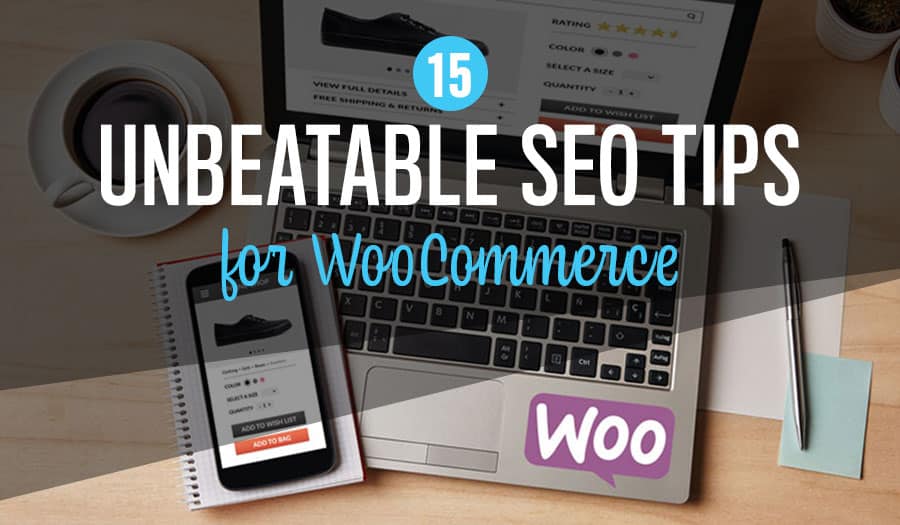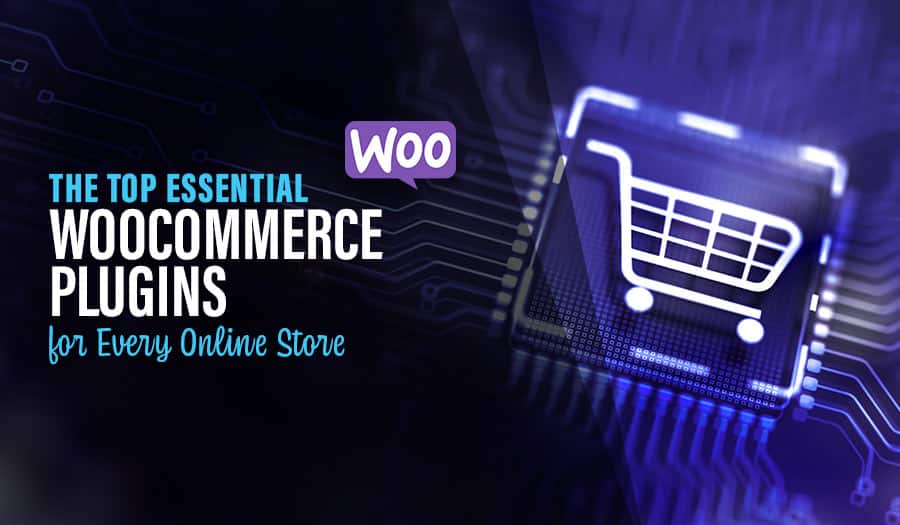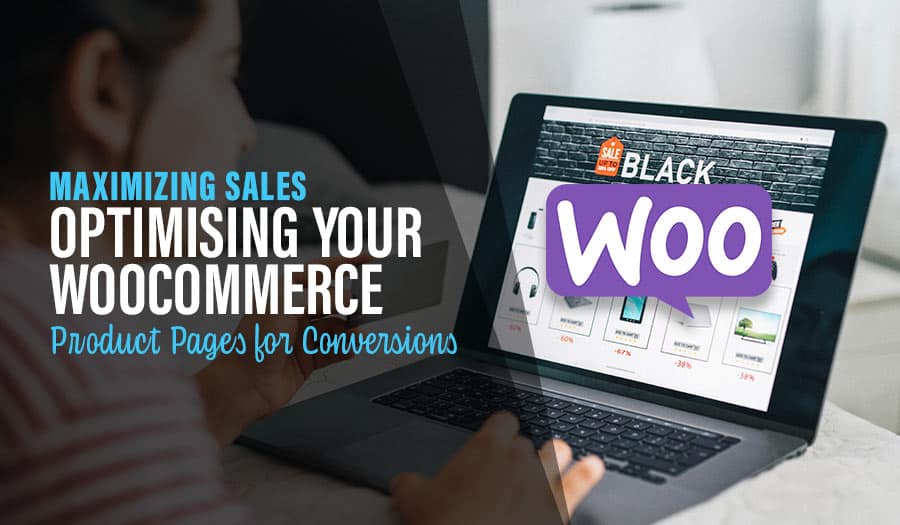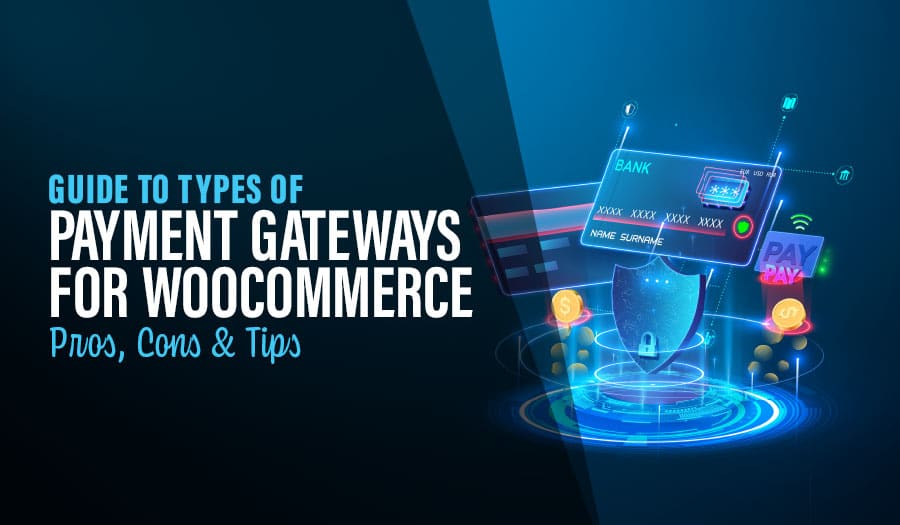Boosting the ranking of your WooCommerce store in search engines can be hard work, but the investment reaps the rewards for you well into the future because SEO traffic is long-term. Here are 15 Unbeatable SEO Tips for WooCommerce.
Here are our 15 unbeatable SEO tips for WooCommerce:
- Optimise your images
- Never duplicate content
- Keep your URL structure simple
- Set up Yoast plugin
- Use Rich Snippets for eCommerce
- Check your site structure
- Use a WooCommerce-specific host
- Make sure you pass the Google mobile friendliness test
- Why not add a blog that adds value?
- Optimise your titles: on-page SEO
- Enable tracking
- Understand Keyword Intent
- Set up Google Alerts (off-page SEO is important, too!)
- A/B test
- Link out for the chance of more backlinks
1. Optimise your images
High-quality images of your products are essential, however if your images have not been optimised they may be negatively impacting your website’s loading speed. This is not only frustrating for your users, but will also negatively impact your ranking in the search engines.
You can optimise your image’s file size without diminishing its quality. For this, we recommend using a plugin such as WP Smush.
You should also ensure your images are optimised for certain keywords. To achieve this, change your image filename, its title and alt description to include your given keyword – while still accurately describing your image.
2. Never duplicate content
Avoid duplicating content and you will have avoided a rankings debacle.
Duplicate content is one of the most common mistakes made by WooCommerce sites, and is one that even trips up the larger sites. When you are faced with crafting unique product descriptions for every one of the hundreds of similar products in your store, it can be a pain – but avoiding it will result in your rankings suffering in the longer term.
Take the time to make each product description unique. Remember that your product descriptions exist to entice your visitors to become customers, so make sure they convince your visitors to hit ‘Add To Cart’!
3. Keep your URL structure simple
Long URLs full of convoluted characters make your URL confusing (and, even worse, can make it look spammy).
To improve your URL structure, adjust your permalinks so that the reflect the most logically organised format possible. You will also have to ensure your site pages, categories, products and blog posts are each optimised for an appropriate keyword.
4. Set up Yoast plugin
There are loads of awesome WooCommerce website extensions that can take your website to a new level. On-page optimisation plugins certainly help a lot when you are trying to improve your SEO, and of all the varied plugins available, we highly recommend Yoast WooCommerce SEO.
Yoast WooCommerce SEO will give you features designed specifically for WooCommerce and, as you would expect from a premium plugin, it delivers what it promises.
This plugin will allow you to:
- Add additional focus keywords per page,
- Reflect your site’s structure by adding breadcrumbs,
- Create Pinterest-specific images,
- Improve your sitemap for best SEO, and so much more!
5. Use Rich Snippets for eCommerce
Google Featured Snippets are a great way to improve the way search engines view your content and to position your business as the authority on a given subject.
Rich snippets can help increase your CTR and will add additional HTML to your pages, giving search engines more information about your content.
While there are a variety of rich snippets available, there are also several designed with eCommerce sites in mind. There are also WooCommerce extensions available which will add Schema markup to your site, in addition to plugins like the Schema and All In One Schema Rich Snippets.
6. Check your site structure
Your site structure exists to improve user experience and to help search engine bots crawl your site.
Some points to consider when it comes to site structure:
- Your site structure should be simply organised, easily accessible and intuitive.
- Ensure every page of your site is accessible within 3-4 clicks from your homepage.
- Be sure to interlink your content and your product pages.
- Use category silos if you have a lot of products.
- Simplify your menu structure to avoid confusion.
- Check your site is free of broken links by installing a plugin like the Broken Link Checker.
7. Use a WooCommerce specific host
A WooCommerce specific host is a necessity if your goal is to scale your site.
A WooCommerce specific host will deliver a hosting platform that has been totally optimised for WooCommerce giving you improved performance and speed, both of which helping you when it comes to search engine rankings.
8. Make sure you pass the Google mobile friendliness test
Mobile-friendly websites are not optional. Google will determine how your site ranks based on the performance and user experience of your site’s mobile version, and this will impact how other versions of your site rank as well.
Make sure your site has passed the Google mobile friendliness test. When your site has been given the tick of approval, you will need to consider improving your mobile user experience to safeguard your rankings.
9. Why not add a blog that adds value?
While a WooCommerce store doesn’t need a blog, it is certainly one thing you can consider adding if you are after a boost in your rankings.
Blogs can help generate social shares and give your visitors a reason to return to your site. You can use your blog to internally link to other products and pages on your site, while creating content with the aim of increasing sales.
You could also use a blog to announce any new product launches, to provide product reviews or demonstrations or to create how-to posts – (all of which, when done well, prove to be very popular on social media platforms!).
10. Optimise your titles: on-page SEO
Every page, product and post on your site needs a page title and each of these titles need to be optimised for both search engines and your readers. You will also need to optimise each of these titles for your target keyword/s and to boost click-throughs.
Ideally, your product descriptions will also need to be optimised, and crafted to include emotion in order to encourage click-throughs, while also being descriptive of the product’s technical details and advantages.
There are some great tools out there to help you craft the perfect headlines and headings. These include Emotional Headline Analyzer, Inbound Now Idea Generator and CoSchedule Headline Analyzer.
Remember, Google needs headings on every one of your website’s pages to figure out your content structure. Google likes structure and you should ensure you only have one H1 (or WordPress classic editor heading) per page.
11. Enable tracking
Enhanced eCommerce tracking allows you to understand how search engine traffic affects your sales and revenue.
Google analytics can provide you with detailed data about your customers’ shopping behaviour with their Enhanced eCommerce tracking which will also give you detailed reports, such as:
- Shopping Behaviour
- Checkout Behaviour
- Sales Performance
- Product Lists Performance
12. Understand Keyword Intent
It is worthwhile understanding the intention of every organic site visit so that you can deliver what your visitors are after, rather than optimising keywords that simply aren’t converting.
Keyword intent can generally be broken down into four categories:
- Transactional: your user came to buy and is ready to buy,
- Investigational: your user is searching for information which may lead to a later purchase,
- Informational: your user is looking for the answer to a specific question, and
- Navigational: your user is searching for a specific website.
To discover what your organic visitors are searching for on your site, look at the keyword data in Google Analytics.
13. Set up Google Alerts (off-page SEO is important, too!)
Google Alerts will send you an immediate notification when a blog post is ranked on Google mentions your brand or links to your site.
You are able to set up your Google Alerts to exclude your own site, so that you will only be notified about mentions of your brand on third party websites.
When you are notified that someone has mentioned your brand, you can approach the blogger and ask them to link to your site (if their textual mention does not already include a hyperlink).
14. A/B test
Now you’ve considered adding a few eCommerce SEO strategies to your site, you should also consider what testing and optimisation strategy you are going to put in place to test their performance. After all, you need to know if these changes have resulted in your visitors being converted into customers!
You can start by using Google Optimize – it’s Google’s free A/B testing and personalisation product. If you want to experiment to see what products and optimisation tactics are working best for you, you will have to connect Google Analytics with Google Optimize, which is easily achieved using MonsterInsights’ Optimize addon .
15. Link out for the chance of more backlinks
Finally, you should be aiming for other websites to link to your WooCommerce site – and the best way to get others to link to you is to link out.
When you link to valuable information resources on other websites (as well as on your own), not only are you providing useful information to your users, the websites you are linking to will likely discover you have linked to them and may consider linking to you the next time they are writing something relevant to your business.
You should now be on your way to improving the optimisation of your WooCommerce store, which should result in a boost to your rankings in the search engines. One of the simplest ways you can ensure your business website’s SEO is up to scratch (and has every chance of converting visiting people) is to use a web design agency.
Now’s the time to get in touch with Pixel Fish so we can help you create an engaging website for your business that converts! We can arrange a time to sit down with you for a website planning session to gain a clear idea of the look and feel you envisage for your website and ensure your website’s navigation, contact forms, and content is perfect.
Take your online store business to the next level with a Pixel Fish Ecommerce Website.
Check out some of our latest Ecommerce Website Design projects.
Further Information
10 WordPress Plugins to Speed Up Your Ecommerce Website
Top 3 Ecommerce Customer Service Tactics for your Website
9 Reasons to Use WordPress for Your E-Commerce Website
More Reading
Top 10 reasons to choose WooCommerce for your business
What does CRM stand for and why your business needs one
6 profitable digital products you can make and sell online
Retail therapy: Top 5 reasons your customers prefer to shop online
$16 Billion Opportunity: Why your business must embrace online selling
WooCommerce Website Design



